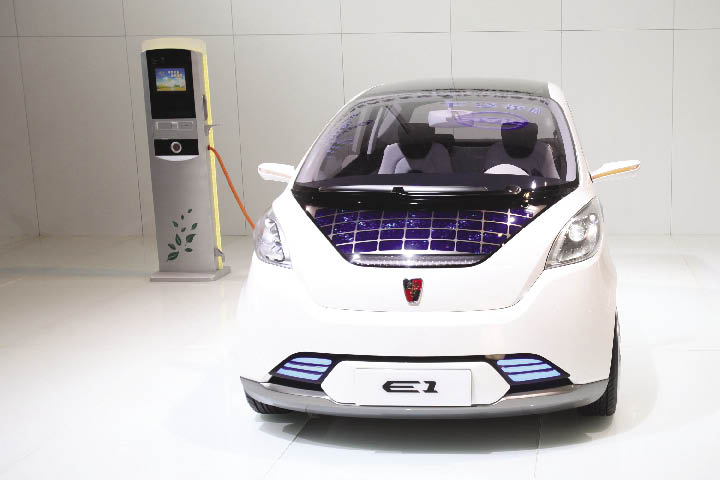| Slow to Rev Up
New Energy Vehicles in China
By LI RUIJIE
WHILE about US $44 billion worth of economic stimulus capital and other encouraging funds have been input into the development of new energy autos worldwide, the Chinese government stepped up to the plate in June to announce a trial program to subsidize purchases of new energy and energy-saving vehicles. The subsidies will initially run in five cities – Shanghai, Changchun of Jilin Province, Shenzhen of Guangdong Province, Hangzhou of Zhejiang Province and Hefei of Anhui Province. “The maximum subsidy for each car is RMB 60,000, which would give a welcome boost to the domestic new energy vehicle market,” comments Xu Changming, director of the Information Resource Department of the State Information Center. This experienced analyst of China’s auto market has a prudent attitude, in sharp contrast to others’ blind enthusiasm about this newly released policy.
So what’s the future for green vehicles in China?
 |
| Roewe E1, a model of electric auto by SAIC Group displayed at the 2010 Beijing International Automotive Exhibition. China Foto Press |
Define That Please
First of all, let’s take a look at the definition of new energy autos. First, it’s a vehicle that runs on a fuel other than “traditional” petroleum fuels. It also refers to those with a new type of power system. Both these stipulations come from the “New Energy Automobile Manufacturing Companies and Products Access Management Rules” implemented last year. The new energy vehicles falling into this category include hybrid electric vehicles (HEV), battery electric vehicles (BEV), solar energy cars, fuel cell electric vehicles (FCEV) and those that use hydrogen engines.
Judging by these standards, new energy vehicles appeared on the Chinese market some time ago. By 1997 the Japan-based Toyota Motor Corporation had developed the Toyota Prius, the first HEV put into mass production. The Chinese government used it during various national conferences, giving the model some serious media exposure. Years later some Chinese carmakers also trying to shift from gasoline to electric, developed their own HEVs (the famous Chery automobile is one), and produced them in mass quantities.
The 2010 Shanghai Expo operates over 1,000 FCEVs and BEVs as tourist buses, realizing zero carbon emissions public transportation on the Expo site. It has been calculated that the use of new energy vehicles will result in a reduction of 10,000 tons of petrol during the 6-month event, meaning 118 tons of harmful substances and nearly 30,000 tons of carbon dioxide emissions that would have made it into the air simply won’t exist.
|
